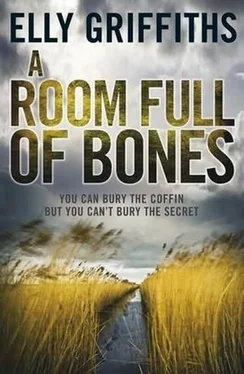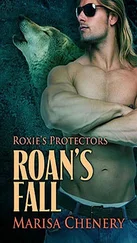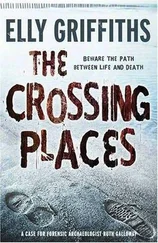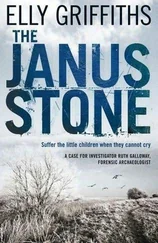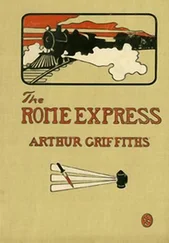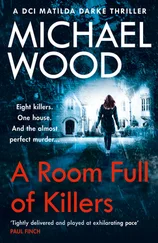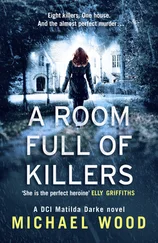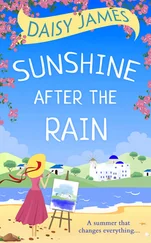‘Yeah,’ says Randolph, lifting off the saddle. ‘Boredom has a lot to answer for.’
‘But you won’t be bored now, will you? You’ve got the stable to run and Caroline’s got the museum. I’ve never seen her so happy. Not since she came back from Australia.’
Not that you ever did anything about Caroline’s unhappiness, thinks Randolph, because she’s not a beagle or a laboratory rat. The Necromancer rubs his head against his shoulder and suddenly Randolph, too, feels a great surge of love towards all animals. The Necromancer doesn’t care if he’s gay or straight, on drugs or clean. As long as Randolph feeds him and takes him out on long gallops, it’s all the same to him. Randolph rubs the horse’s ear affectionately and turns to his mother.
‘There’s going to be a big party at the museum,’ he says. ‘Caroline’s organising it. To celebrate the skulls going back. Will you come?’
Romilly reaches up a gloved hand to touch his cheek. ‘No darling. I think I’ll give it a miss. One way or another I’ve rather had enough of the museum.’
The repatriation ceremony is held on the fifteenth of December. Ruth has, that morning, opened the fifteenth window on Kate’s advent calendar. She ate the chocolate herself to save Kate’s teeth. What a good mother. Christmas suddenly seems to be uncomfortably close. It is the last week of term and the department noticeboard is groaning with parties and carol concerts. Phil and Shona are having a party on Christmas Eve (‘our last fling before the baby’s here’) and Ruth is already thinking of ways to avoid it. She is wondering whether she has the nerve to invite Max for Christmas. They have had one weekend together since the Elginist conference, and even to Ruth’s over-critical eye it seemed to go rather well. She knows that Max has no family left alive and, as for her, she’d do anything to avoid Christmas with her parents and brother.
Driving from the university to the Smith Museum, she allows herself to think about Christmas on the Saltmarsh with Max and Kate. She could buy a tree. She’s forty-one years old and she’s never bought her own Christmas tree. How pathetic is that? She has a vision of herself and Kate decorating the tree. They could make the decorations out of salt dough (something which, like potato prints, seems to Ruth the very pinnacle of mothering). They could go into town to see Father Christmas, though she loathes shopping malls – and Father Christmas too for that matter. She remembers the time, two years ago, that she saw Nelson Christmas shopping with his wife and children. It had been her first glimpse of Michelle and Ruth had disliked her on sight. So much has changed since then. Ruth herself has changed, she thinks, almost beyond recognition.
Michelle has agreed that Nelson should see Kate once a month and the first meeting, on the bouncy, neutral ground of a soft play area, had been predictably awkward. Nelson had played with Kate while Michelle and Ruth drank coffee and talked about Christmas and families and aren’t home-made mince pies nicer than shop-bought ones. When Kate is used to him Ruth is going to let Nelson have her on his own. That should be easier all round. Maybe Kate will gain a much-needed aunt figure in Michelle. She’ll need someone to take her shopping when she’s a teenager.
Will Kate gain a father figure in Max? That remains to be seen. Even in Ruth’s festive fantasies, Max is relegated to the background, mulling wine and roasting chestnuts. Despite everything, she doesn’t seem to want a man around all the time. Still, Max will be there today and maybe she can broach the subject of the holidays. Nothing like an Indigenous Australian Repatriation ceremony to remind you of Christmas.
Ruth parks in the museum car park, remembering the day, just over a month ago, when she came here to find Neil Topham lying dead in the Local History Room. The curator has not been forgotten by the Smith family. The Local History collection will be renamed The Neil Topham Collection, and, according to Cathbad Randolph is talking about sponsoring a Topham history prize at the university.
Cathbad is the first person that Ruth sees as she walks into the entrance hall. He is standing looking at the stuffed figure of the Great Auk. The moth-eaten bird is the only survivor of Caroline’s enthusiastic modernisation. The lobby has been freshly painted, the map of King’s Lynn and the oil painting of Lord Percival Smith have been replaced by computer screens asking visitors to rank their experience from ‘Awesome’ to ‘Disappointing.’ Instead of the dusty chandelier, modern light fittings snake across the ceiling and, in honour of the Indigenous Australian guests, the Aboriginal flag, bands of black and red intersected by a glowing yellow sun, covers one wall.
Ruth blinks. ‘Blimey. This is all a bit different.’
Cathbad turns and smiles. ‘I know. These days, if you stand still long enough, Caroline either paints you or plugs you in.’
Cathbad is looking impressive in a fur-lined cloak with his long hair loose. Ruth is pleased to see him dressed up. The last few times they have met it has been in the university canteen and Cathbad was in his ordinary clothes and white coat. He looked like any other middle-aged lab technician and there was something in his eyes, something sad and rather defeated, that made Ruth in turn feel sad. Cathbad told her that Judy had ended their relationship. ‘She said that she wanted to give her marriage a proper chance. I supported her, of course. The spirits are strong within her.’ Judy certainly seems strong these days. Maybe it’s because she was in charge when Nelson was ill, because on the couple of occasions that Ruth has seen her recently, Judy has been in full-on police professional mode. She wonders if Judy will be here today. She knows that Nelson and Superintendent Whitcliffe are expected. Whitcliffe is making a speech complete with references, according to Nelson, to Mother Earth and the mystic unity of the nations.
Ruth and Cathbad walk through the Natural History gallery. The stuffed animals are still here, red in tooth and claw, and Ruth realises that she would be quite sad to see them go. The only concession to modernity is an interactive display showing endangered species, the world pulsing with red, amber and green lights. Ruth presses on Australia and an icon of a koala fills the screen. Surely koalas aren’t endangered? They’re in all the ads.
Cathbad is staring at a case labelled ‘Wandering Albatross’.
‘That’s a great name, isn’t it?’ he says. ‘Wandering Albatross.’
‘Do me a favour and don’t name your next child Albatross.’
‘I won’t have another child,’ says Cathbad.
They walk into the replica study where the stag still gazes down from the red-painted wall. Ruth looks at the waxwork figure of Lord Percival Smith, the man who thought it would be a good idea to collect human bones and keep them in boxes. She notices that the label describing him as ‘adventurer and taxidermist’ is missing. Ruth is sure that Bob and Caroline will find a better phrase to describe him.
This time they take the door not into the Local History Room but into a space marked New World Collection. And it is a new world: a long light room painted white, with doors opening onto a patio. The rainbow serpent forms splashes of colour on the walls along with hugely magnified words from Bob’s poems. There is a display of children’s artwork and a papier-mâché model of a kangaroo. Where are Lord Smith’s branding irons and dingo traps, wonders Ruth. If they are present, they are buried somewhere under the red and yellow flags. This is a land of primary colours; darkness has no place here.
At the end of the room Caroline Smith, resplendent in a gold dress decorated with vaguely Aboriginal patterns, is pouring glasses of champagne. There is a table laden with food and drink and decorated with pine branches. The smell reminds Ruth of her fantasy Christmas tree. Clough is already getting stuck into the buffet and various local reporters wander round clutching glasses. A handsome man in a black suit stands beside Caroline, dispensing bonhomie.
Читать дальше
